Joe Biden is the eighth sitting US president to visit Ireland since 1963. This interest in Ireland by American presidents far outweighs the country’s geostrategic or economic significance to the United States. So why do they come? The common and largely correct answer to that question is electoral politics. With more than 40 million Americans claiming Irish ancestry, a trip to the old country comes with a certain obvious electoral appeal.
John F Kennedy established the formula during his historic visit in 1963, visiting with distant cousins on the Kennedy family homestead in Dunganstown, Co Wexford. The Dunganstown legacy provided a blueprint for subsequent visits by Richard Nixon, Ronald Reagan, Barack Obama and now Biden to follow, locating their roots in small-town, rural Ireland. These visits are acts of political theatre with American audiences clearly in mind but with some complexity in how each is expected to play with American audiences.
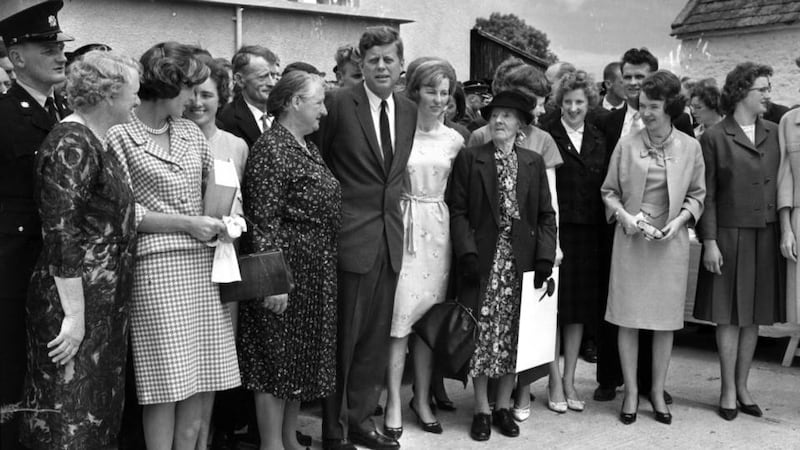
American presidents are viewed by those who vote them into office as symbols of national identity. Until Kennedy’s election in 1960, occupants of the White House routinely grounded their biography in a mixture of Protestant faith and ancestral roots in the early republic, with log cabins and frontier credentials featuring prominently from the age of Andrew Jackson. Kennedy’s Catholicism and immigrant background broke the mould in 1960. JFK had re-election and American voters in mind when he decided to visit Ireland, but not necessarily Irish Americans, whose vote he could already largely rely on.
The Dunganstown visit was instead a recasting of the log cabin narrative, an orchestrated effort to expand the definition of core American identity from the frontier and the heartland to include the masses of European immigrants who had arrived in the US between the Irish famine and end of the first World War. Kennedy was crafting what a later commentator called the Ellis Island narrative.
READ MORE
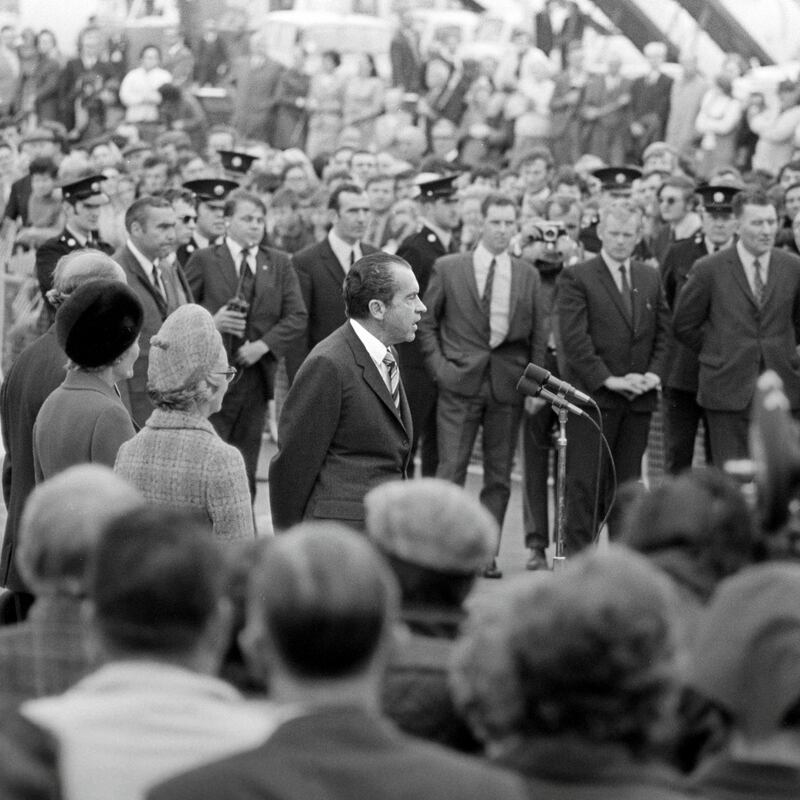
Nixon, with one eye on re-election and a potential challenge from the Kennedy dynasty, hoped to replicate the magic of JFK’s visit and expand his appeal to traditionally Democratic white ethnic voters in the US. His expectations were not met in what was aptly dubbed in a later RTÉ radio documentary “the forgotten visit”. Headlines about the egg-throwing antics of anti-Vietnam war protesters upstaged Nixon’s photo op at the graveside of his Milhous ancestors in Timahoe, Co Kildare. The 18th-century migration story of Nixon’s Quaker ancestors fit neither the Ellis Island narrative nor conventional understanding at that time of what it meant to be Irish American.
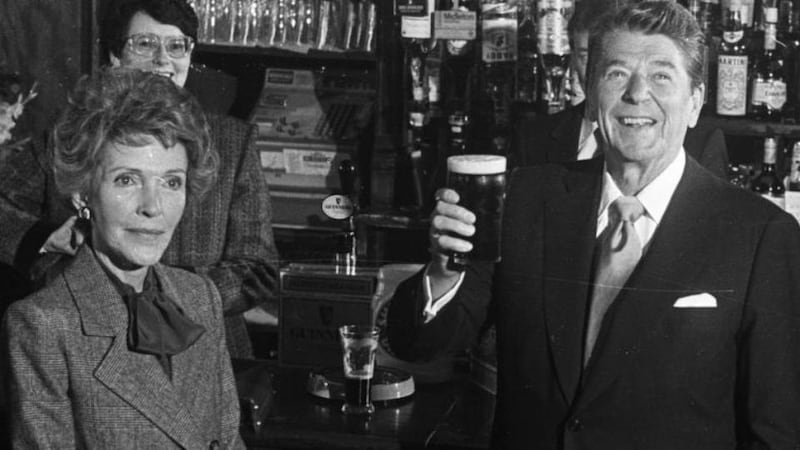
Reagan’s 1984 visit, in contrast, was more successful. Arriving in the run up to his re-election campaign, Reagan’s story conformed more easily with the narrative that Kennedy had succeeded in situating in the mainstream of American identity. The visit was tailor made to appeal to the so-called Reagan Democrats, the same white ethnic voters that Nixon had targeted who were increasingly abandoning the Democratic Party for the GOP. The carefully choreographed Ballyporeen portion of the trip, shielded from the vocal protests in Dublin against US policy in Central America, succeeded in positioning Reagan at the heart of the Ellis Island narrative.
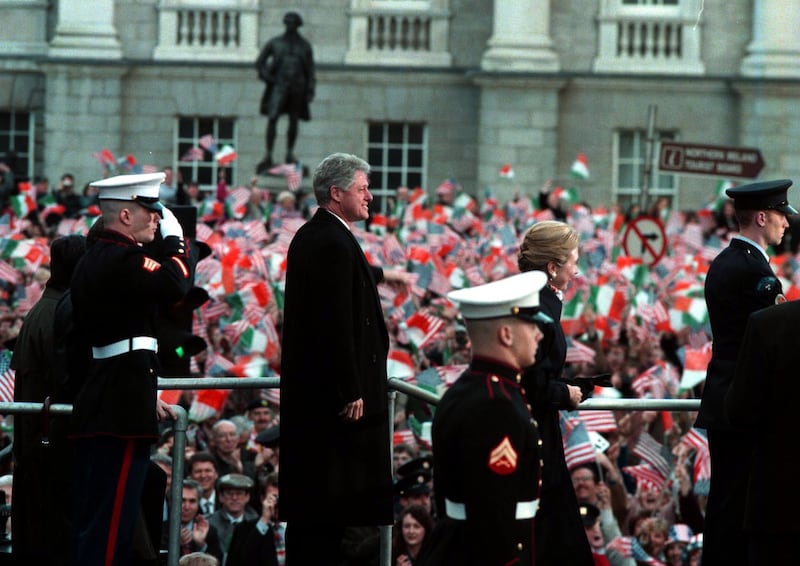
The three visits of Bill Clinton in the 1990s temporarily interrupted the Dunganstown legacy, replacing ancestral pageantry with a substantial presidential initiative to broker a peace deal in Northern Ireland. The anniversary of the resulting Belfast Agreement forms the primary context for Biden’s visit. The decision to break with the traditional US policy of deferring to London on all matters related to Northern Ireland and to throw the full weight of his presidency behind the peace process by visiting Ireland north and south stemmed from a commitment Clinton made during the primary campaign in 1992 that was calculated to secure the support of powerful Irish American figures in the Democratic Party for his nomination. American votes were still a factor in Clinton’s Irish trips.
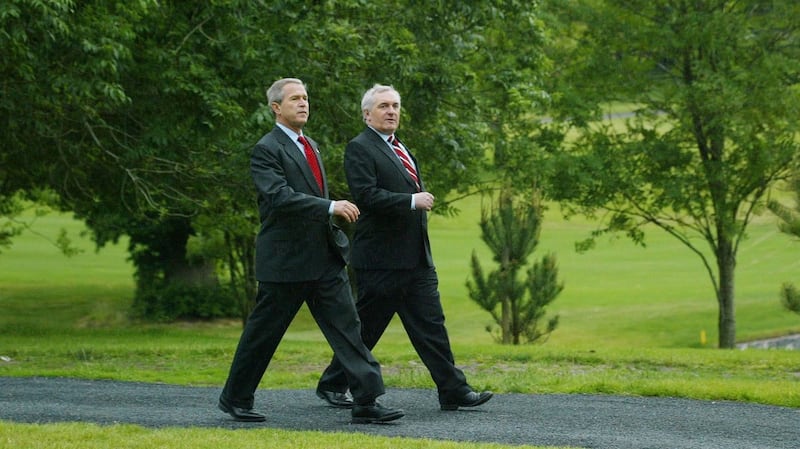
The same could not be said for the brief stopovers in Ireland of George W Bush in 2004 and Donald Trump in 2018, Bush for a European Union summit at Dromoland Castle and Trump to visit his golf resort in Doonbeg. Barack Obama, however, revived the Dunganstown legacy with its implicit appeal to American voters when he arrived in Ireland in 2011. Obama’s visit to Moneygall was similar in so many respects to Reagan’s earlier stopover in Ballyporeen, right down to the pint-sipping photo op in the local pub.
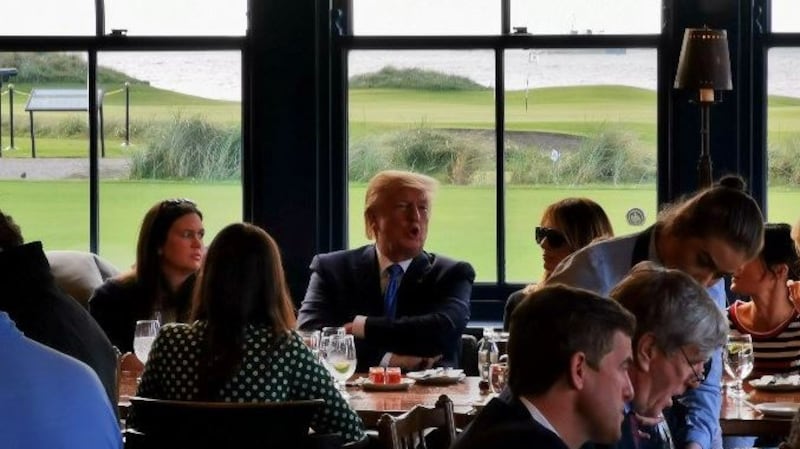
Addressing a massive crowd in College Green, Obama nonetheless offered new twist on the Ellis Island narrative. In comparing the experience of his father leaving a small town in Kenya in search of opportunity in America to the journey across the Atlantic made by his great-great-great maternal ancestors, Obama offered a more expansive version of the story that Kennedy and Reagan had told. Obama’s visit was less about highlighting his Irish ancestry than about building a new multicultural narrative of immigration and American identity that extended beyond the white European funnel of Ellis Island. For a president whose American identity was doubted by so many white voters in the US, Ireland offered a familiar stage on which to make this appeal.
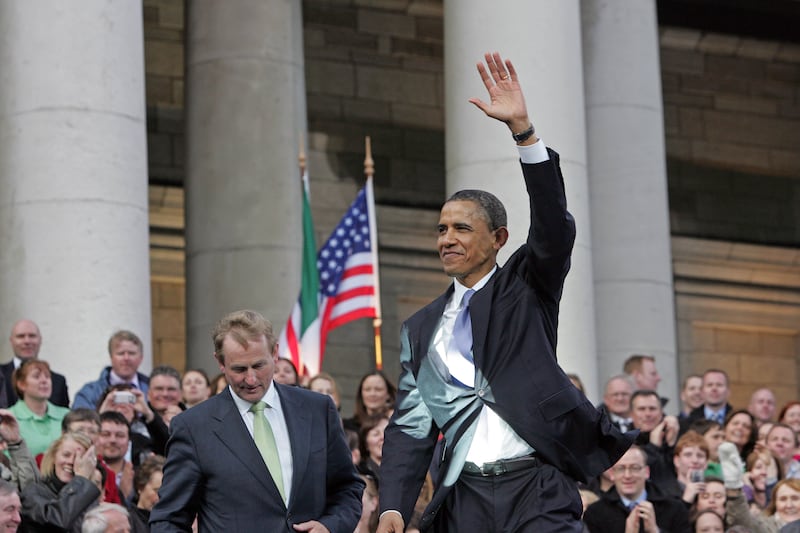
With an approval rating consistently below 50 per cent and a re-election campaign looming on the horizon, historical precedent might point to this being an opportune time for Biden to visit Ireland. Reagan and Obama went on to secure re-election the year after their visits and Kennedy likely would have done so too had he not been assassinated. Biden’s sojourn in Ballina will surely ring with echoes of Dunganstown but the return on such political pageantry is no longer clear. The Irish vote, like every other constituency in the US, is deeply fractured along the fault line of culture-war politics, with one of the most divisive issues being immigration. Obama’s College Green speech highlighted the complexity of an issue which can no longer be framed as neatly in rural Ireland as Kennedy and Reagan so readily did.
David P Kilroy is chair of the department of humanities and politics at Halmos College of Arts and Sciences, Nova Southeastern University













